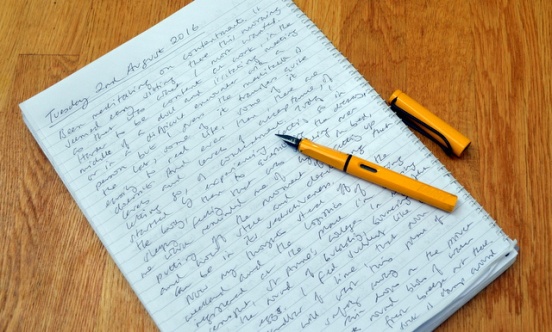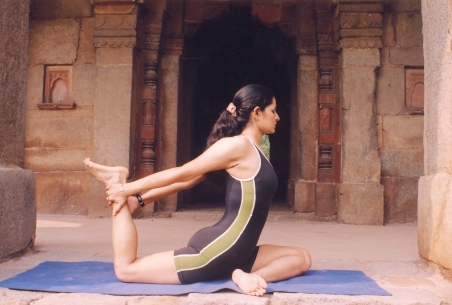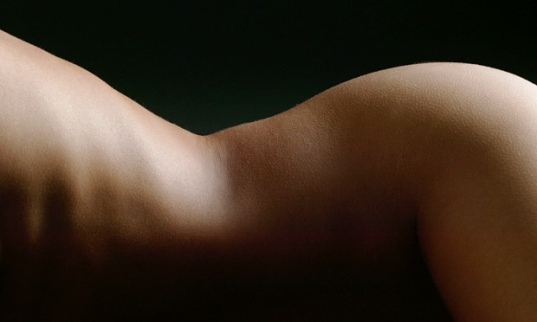You might have noticed a second wave in the development of secular mindfulness, of courses focusing on developing loving-kindness (traditionally called metta) and compassion, such as Mindful-Based Compassionate Living and Mindful Self Compassion
Perhaps this is a necessary corrective to what at first glance might appear the more “mind” centred focus of mindfulness to the more “heart” centred focus of loving-kindness and compassion practices. However, when we practise mindfulness with our whole being, we soon begin to realise that it is deeply imbued with attitudes of kindness and compassion. It is kindness that brings us to sit and meditate. Through our practice we make the inward gesture of kindness to self to be able to make that outward gesture of kindness to others from a deeper, more sustainable well-spring.
Step One – Seeing
First we need to see what’s going on. As we practice mindfulness, we are likely to notice how self-judging we are and gradually we learn to step out of the automatic pilot of negative thoughts and then to see thoughts as interpretations rather than as solid facts. We learn to turn towards whatever is arising for us, whether it’s physical pain, mental or emotional discomfort, surrounding it with awareness. Being-with rather than pushing away or drowning in this experience, we often find that there’s a softening and a releasing which seemingly happens all by itself. All of this is a kind of process of kindness in itself. However, we can also more actively counteract our self-critical and overly harsh tendencies by deliberately developing an attitude of kindness and acceptance towards ourselves and, by extension, others.
Step Two – Cultivating
But how to do this and what if you feel some aversion towards the idea of being more kind and understanding to yourself? Many of us have been brought up to be self-critical almost as a virtue, comparing ourselves to others on all kinds of scales from intelligence to appearance to worldly success. We might be suspicious of the idea of showering good will and kindness on ourselves, feeling that we don’t deserve this, or that it would be self-regarding and even selfish.
However, if a good friend was going through a hard time or saying horrible, harsh things about themselves, wouldn’t you want to show them kindness and compassion, reassuring them that they’re ok. Why not take that same attitude to yourself? Be your own friend. Why do we have to be harder on ourselves than we would be to almost anyone else? And far from being selfish to show kindness to ourselves, it is through developing understanding and compassion towards ourselves that we can empathise with others too.
Here are some questions and reflections (adapted from an exercise in Kristen Neff’s book Self-Compassion: Stop Beating Yourself Up and Leave Security Behind) to help you become more aware of the way you relate to yourself:
- What types of things do you tend to judge or criticize yourself for eg how you look, relationships, behaviour, personality, work, study?
- What sort of language do you use with yourself when you notice some flaw or make a mistake – do you insult yourself with words like “I’m so stupid” or “I’m a really bad person”?
- When you talk to yourself like this how does it make you feel inside?
- What are the consequences – do you feel de-motivated or depressed?
- How do you think it would be just to accept yourself as you are – does this worry you, give you hope or both?
Applying Kindness to stress and suffering
In answering the questions above you might now have some greater degree of insight into the unkindly, conditioned and reactive ways in which we find it hard to forgive or accept ourselves even for the smallest “misdemeanours”. And because this is an ingrained habit of mind, it can take some shifting. So here are some Kindness Cultivation exercises we can do whenever we notice we’re stressed, overwhelmed and suffering (again, adapted from Kristin Neff’s excellent book).
Give yourself a hug – this might sound a bit strange or silly but it can be surprisingly effective because it helps trigger the release of de-stressing hormones in the body. You could stroke or pat your arm, rub your temples or wrap your arms around yourself in a hug.
Friendly breathing
Sitting, standing or lying down begin to tune into your breathing. You could place your hand on your heart if this feels ok. Then after a few rounds of breathing, begin to imagine and sense that as you breathe in you are breathing in kindness to yourself. Then as you breathe out, you are sending out kindness to others in the world. If you find this really challenging, mainly just practise following the breath and from time to time return to this sense of breathing in kindness. Don’t worry if you can’t feel a sense of kindness, even just the thought of feeling kindness will help. How does that feel in your body, in your feelings and emotions and in your mind? Eventually let go of breathing in a sense of kindness and just return to following your breath for as long as feels right.
Self-Kindness Meditation
You could do this practice regularly or you could do it when you notice you’re feeling stress, anxiety or sadness.
Begin by feeling any areas of stress or tension in your body. Also feeling what emotions are around, maybe sadness or fear or anger. When we feel strong difficult emotions it can make us feel very alone in our struggle. You could reflect that actually all people suffer sometimes, we’re not alone in this. We all struggle in our lives. This is not intended to make you feel you don’t deserve kindness because others suffer too, or more than you, but more that you equally deserve your own kindness towards yourself.
Then, if it feels ok, you could place your hand on your heart, or wherever it feels soothing, feeling the warmth and gentle touch of your hand. Then after focusing on your breath and body sensations for a few moments you could sense that wish to be happier or more at ease and say some of the following phrases to yourself, or other words that feel more right for you.
“May I be well”
“May I accept myself as I am”
“May I be strong”
“May I be safe”
“May I be happy”
If you’re having trouble finding the right words, sometimes it helps to imagine what you might say to a good friend struggling with that same difficulty. Then, could you say something similar to yourself, letting the words roll gently through your mind?
Remember, it’s ok if you don’t actually feel kindness to yourself, you can still say the words and that in itself is likely to have a positive effect on your relationship to yourself over time.
Traditionally, extending kindness to ourselves is seen as the first stage, and we then move out to developing kindness towards a loved one, then a neutral person (the world is full of these!), a difficult person and finally all sentient beings. Here is a recording of a live stream where I recently guided this practice if you’d like to try this out.









